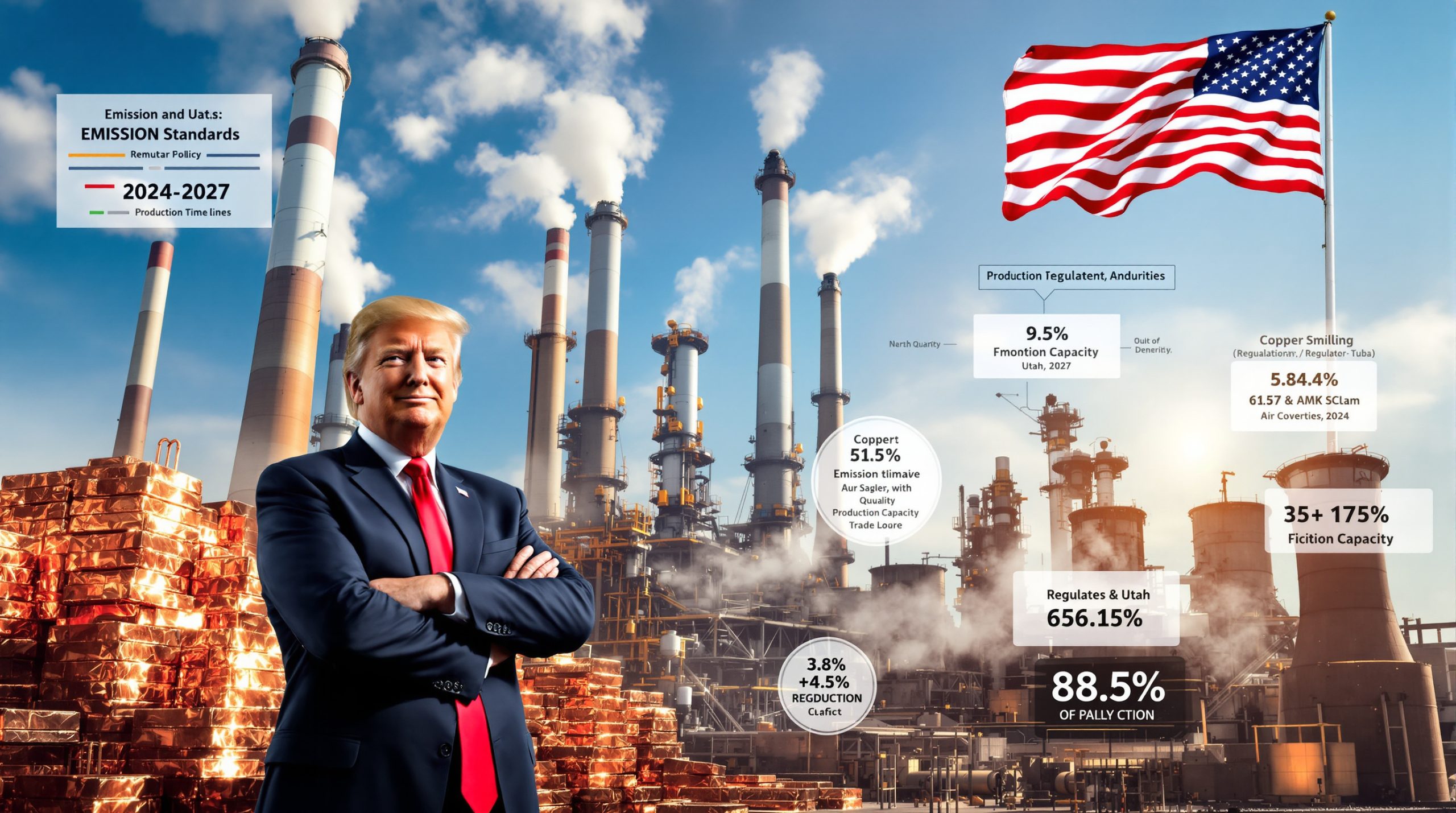Understanding the Current Zinc Market Crisis
The global zinc market faces an unprecedented crisis as LME zinc inventory shortage reaches critical levels never witnessed since the late 1980s. Exchange-registered warehouses now contain merely 35,300 metric tons of available zinc, representing less than 24 hours of worldwide industrial consumption. This dramatic shortage has transformed what many considered a routine supply surplus into the most severe physical tightness in decades, requiring comprehensive investment strategies for 2025 to navigate these challenging conditions.
Daily global zinc consumption averages approximately 38,356 tons, making current inventory levels catastrophically insufficient. The situation represents an 88% reduction from peak 2024 levels when warehouses held over 300,000 tons. This collapse in available metal has caught market participants off-guard, particularly those maintaining short positions who failed to recognise the gathering supply storm.
Regional Production Imbalances Reshape Global Supply
The zinc market's structural transformation stems from dramatic regional production shifts that have fundamentally altered global supply chains. Western hemisphere smelting operations have contracted severely throughout 2025, with multiple facilities either reducing operations or ceasing production entirely. Furthermore, these developments mirror broader mining industry trends affecting global commodity markets.
Key Regional Changes:
• Japanese refineries, including Toho Zinc's Annaka smelter, have permanently closed operations
• European processing facilities struggle with deteriorating economic viability
• Chinese refined zinc production surges 6.2% while rest-of-world output contracts
• Treatment charges become insufficient to maintain profitable Western operations
This geographic concentration creates supply chain vulnerabilities for non-Chinese consumers, who increasingly depend on Asian producers for metals previously sourced regionally. The International Lead and Zinc Study Group projects China will account for virtually all of 2025's global refined zinc production growth, highlighting the market's dangerous dependency on a single nation.
Warehouse Dynamics and Trade Flow Disruptions
Singapore's transformation from a zinc storage hub to an export gateway illustrates the market's structural changes. The city-state, lacking domestic smelting capacity, has become a crucial redistribution centre for refined zinc flowing to unexpected destinations across Africa and Central America.
Singapore Export Destinations in 2025:
| Region | Primary Destinations | Strategic Significance |
|---|---|---|
| East Africa | Djibouti, Kenya | Infrastructure development |
| Central America | Guatemala, Honduras | Industrial growth markets |
| West Africa | Ghana, Senegal | Mining sector expansion |
This redistribution pattern indicates fundamental shifts in global zinc trade flows, with traditional supply relationships breaking down as Western smelter capacity disappears. The approximately 700,000 tons of zinc that moved through Singapore warehouses in 2024 represented massive stock churn driven by warehouse incentive programs and rent-sharing arrangements.
Historical Context of Market Squeezes
Current market conditions represent the most severe physical tightness since the LME special high-grade zinc contract launch in the late 1980s. Time-spread differentials have expanded beyond $300 per ton, with overnight rolling costs reaching $30 per ton during peak shortage periods.
The cash-to-three-month premium explosion demonstrates exceptional market stress, far exceeding typical volatility patterns. Six major long position holders now control cumulative cash positions exceeding three times available stocks, creating unprecedented concentration risk. However, this situation draws parallels to zinc market dynamics witnessed during previous market squeezes.
Market Psychology Insight: The current squeeze reflects a classic behavioural finance scenario where market participants dismissed inventory depletion signals, confident that falling LME stocks didn't reflect true market fundamentals.
Industrial Impact and Economic Consequences
The zinc shortage creates cascading effects throughout industrial supply chains, particularly affecting galvanising operations, die-casting manufacturers, and brass production facilities. Construction industry costs escalate as galvanised steel prices surge, while automotive manufacturers face pressure to adjust zinc coating specifications.
Sector-Specific Impacts:
• Construction: Galvanised steel cost increases of 15-25% above historical averages
• Automotive: Supply chain disruptions for zinc-coated components
• Infrastructure: Material cost escalation affecting project economics
• Manufacturing: Increased working capital requirements for inventory management
These disruptions extend beyond immediate price impacts, forcing companies to reconsider supply sourcing strategies and inventory management approaches. Some manufacturers explore aluminium and other metals as substitution alternatives, potentially creating secondary supply pressures in related markets.
Smelter Economics and Treatment Charge Dynamics
The collapse in Western smelting capacity reflects deteriorating economics as concentrate availability tightens globally. Treatment charges, the fees smelters receive for processing zinc concentrates, have fallen below levels necessary to maintain profitable operations.
This economic pressure particularly affects secondary zinc operations, which process recycled materials and typically operate on thinner margins than primary smelters. Moreover, smelt restructuring insights demonstrate how challenging economics force capacity rationalisation across the industry.
Smelter Capacity Utilisation Factors:
• Concentrate availability and pricing
• Energy costs and regulatory compliance
• Capital maintenance requirements
• Competition from Chinese facilities
Physical Arbitrage Challenges and Price Differentials
Despite widening price differentials between London and Shanghai exchanges, physical metal movement requires significant time, leaving immediate supply gaps unresolved. The London premium over Shanghai Futures Exchange zinc prices continues expanding, but arbitrage opportunities remain constrained by logistics and timing.
Chinese exports to LME warehouses represent the most direct mechanism for addressing the supply imbalance, yet physical arbitrage typically requires 4-6 weeks for meaningful inventory rebuilding. This time lag means short position holders must endure continued pressure until stocks rebuild substantially.
Future Supply Projections and Market Outlook
Industry analysts project a dramatic reversal in zinc supply dynamics, with potential surplus production reaching 271,000 tons in 2026. However, this anticipated relief remains distant relative to current shortage severity, and the projected surplus assumes optimal operating conditions across global production facilities.
2026 Supply Forecast Assumptions:
• Chinese production maintains current growth trajectory
• Western smelter capacity remains largely offline
• Mine supply continues expansion from current projects
• Demand growth remains constrained by economic conditions
The geographic concentration of future production in Asia, combined with permanent Western smelter closures, suggests lasting changes in global zinc supply architecture that could affect market stability beyond the current crisis.
Risk Management Strategies for Market Participants
Current market volatility demands sophisticated risk management approaches for both industrial users and financial market participants. Companies must balance immediate supply needs against future price risks while navigating extreme market conditions.
Corporate Hedging Approaches:
• Forward Contracts: Lock in future delivery prices despite current premiums
• Strategic Inventory: Accumulate stock during availability windows
• Supply Diversification: Develop relationships across geographic regions
• Substitution Planning: Prepare alternative materials for critical applications
Financial market participants face different challenges, with traditional trading strategies requiring adjustment for extreme volatility and limited physical availability. Options strategies become particularly relevant for managing asymmetric risk profiles in squeeze conditions.
How Do Base Metal Markets Interconnect?
The zinc shortage demonstrates interconnectedness across base metals markets, particularly affecting copper price prediction models and iron ore demand trends. Consequently, substitution effects and supply chain adjustments create ripple effects throughout industrial commodity markets.
Investment Portfolio Implications
Zinc market dynamics present both exceptional opportunities and significant risks for commodity-focused investment strategies. Extreme volatility creates potential for substantial gains while simultaneously exposing positions to dramatic losses during rapid reversals.
Investment Considerations:
• Position sizing becomes critical given volatility extremes
• Traditional technical analysis may prove unreliable during physical squeezes
• Fundamental analysis requires real-time inventory tracking
• Risk-adjusted returns may favour options over direct futures exposure
The current environment rewards nimble trading approaches while punishing static buy-and-hold strategies, particularly for investors unprepared for the unique dynamics of physical metal markets during shortage periods.
Regulatory and Policy Considerations
Exchange authorities face challenges managing orderly markets during extreme shortage conditions. The London Metal Exchange must balance market integrity concerns against the natural forces driving current price discovery mechanisms.
Position limit considerations become particularly relevant when six major holders control positions exceeding available physical stocks. Regulatory intervention possibilities include emergency lending facilities or temporary position restrictions, though such measures could distort natural price discovery processes.
What Role Do Global Exchanges Play?
International exchanges like the LME zinc market provide crucial price discovery mechanisms during shortage periods. Furthermore, these platforms enable sophisticated risk management whilst maintaining market liquidity during extreme conditions.
Strategic Outlook for Market Normalisation
Recovery from current shortage conditions depends primarily on Chinese export flows and potential Western smelter restart decisions. However, the permanent closure of several facilities suggests structural capacity loss that may prevent full normalisation to historical patterns.
Normalisation Timeline Factors:
• Chinese government export policies and domestic demand
• Economic viability of restarting idle Western capacity
• Infrastructure requirements for resumed operations
• Environmental and regulatory approval processes
Market participants must prepare for extended periods of elevated volatility as supply chains adjust to new geographic realities. The current crisis likely represents a permanent shift rather than a temporary disruption, requiring fundamental changes in how companies approach zinc procurement and inventory management.
The LME zinc inventory shortage has exposed critical vulnerabilities in global supply chain assumptions, forcing a complete reevaluation of market structure and participant strategies. Understanding these evolving dynamics proves essential for navigating both immediate challenges and longer-term structural changes in the zinc market landscape.
Want to Profit From Critical Metal Shortages?
The current zinc crisis demonstrates how rapidly metal markets can transform from surplus to severe shortage, creating exceptional opportunities for alert investors. Discovery Alert's proprietary Discovery IQ model instantly identifies significant ASX mineral discoveries across zinc, copper, and other critical metals, empowering subscribers to capitalise on market opportunities before broader market recognition drives prices higher.




